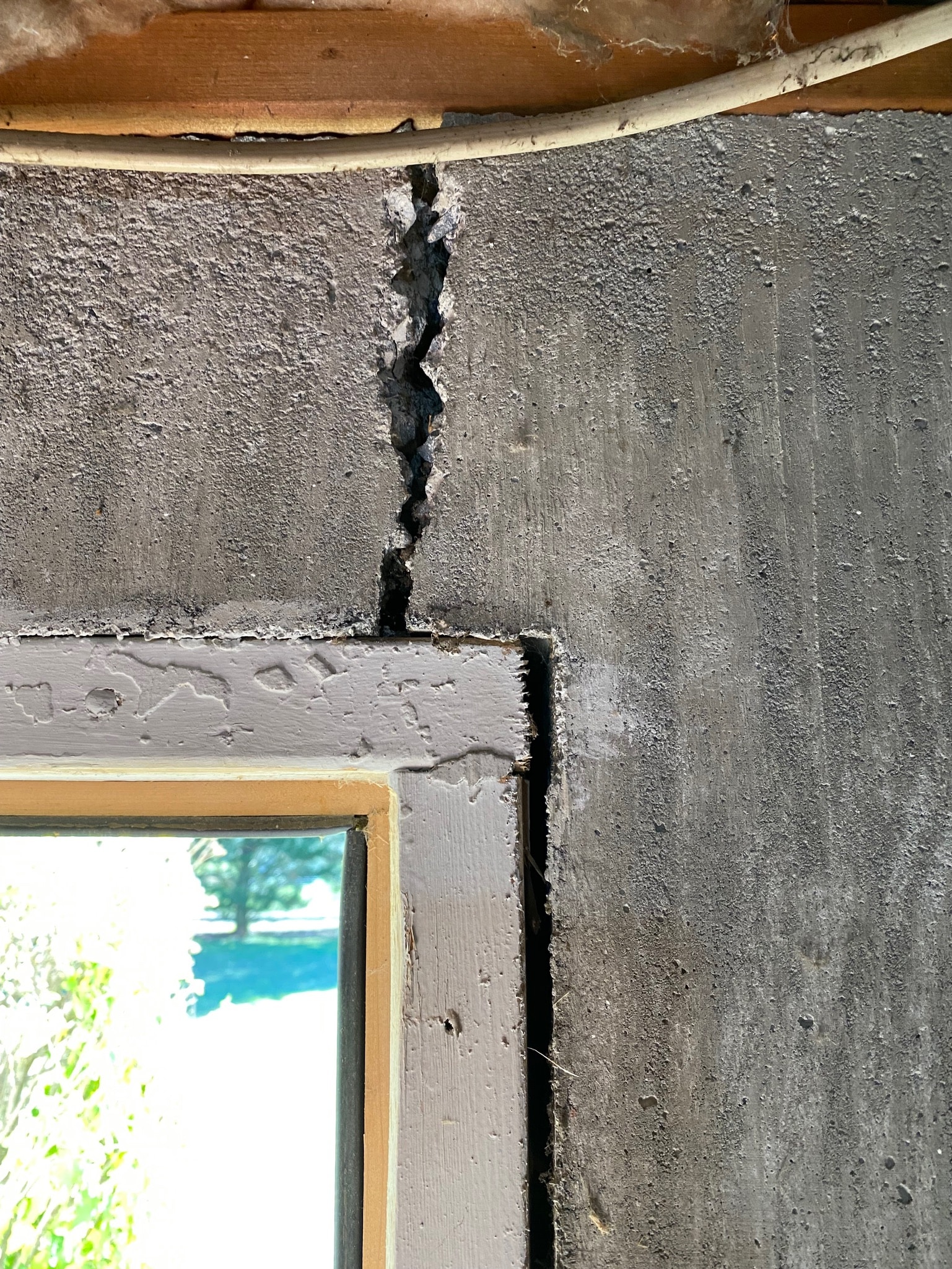
Home renovations can be exciting — transforming a cramped kitchen into a spacious gathering place, adding a sunroom to enjoy morning coffee, or finishing a basement for extra living space. But while you focus on design choices and new finishes, there’s an essential element that often gets overlooked: your foundation.
Renovations can unintentionally introduce new stresses to your foundation, leading to cracks, settlement, and costly structural problems down the road. Whether you’re planning a major addition or a simple remodel, understanding how to protect your foundation during the process is critical to ensuring the longevity and safety of your home.
In this article, we’ll explore how renovations impact your foundation, warning signs to watch for, and expert strategies to prevent damage before it starts.
🔑 Key Takeaways
- Home renovations can change load distribution and soil pressure, potentially harming your foundation.
- Common risks include overloading, excavation errors, and drainage changes.
- Warning signs include new cracks, uneven floors, and sticking doors or windows during or after construction.
- Preventative measures include professional foundation assessments, proper drainage planning, and structural reinforcements.
- Involving foundation specialists before renovations can save time, money, and future headaches.
How Renovations Can Affect Your Foundation
Most homeowners assume foundation problems develop slowly over time, but renovations can rapidly accelerate damage if not managed carefully.
Added Structural Load
Adding a second story, heavy roofing materials, or large stone fireplaces significantly increases the weight your foundation must support. If your foundation wasn’t originally designed for these loads, it can cause differential settlement or cracks.
Excavation and Soil Disturbance
Basement expansions, underpinning, or landscaping projects often involve excavation. Disturbing the soil around the foundation can change its load-bearing capacity, leading to shifting or settling.
Changes in Drainage Patterns
New additions, patios, or landscaping features can alter water runoff paths. Poorly planned drainage increases the risk of soil saturation around your foundation, creating hydrostatic pressure and settlement issues.
Heavy Construction Equipment
Large machinery near your foundation can compact or vibrate the surrounding soil. These vibrations can disturb the delicate balance that supports your foundation.
Warning Signs of Foundation Stress During Renovations
Stay alert for these red flags during or after your remodeling project:
| Sign | Possible Cause |
|---|---|
| New or widening cracks | Foundation shifting due to added load or soil movement. |
| Sticking doors or windows | Frame distortion from foundation movement. |
| Uneven or sloping floors | Differential settlement under new loads. |
| Gaps between walls and ceilings | Foundation pulling structural elements apart. |
| Basement water intrusion | Altered drainage patterns or soil disturbances. |
If you notice any of these signs, stop work immediately and consult a foundation professional.
Tips to Protect Your Foundation Before and During Renovations
1. Schedule a Professional Foundation Assessment
Before starting renovations, have a qualified foundation specialist evaluate your current foundation condition. This helps identify pre-existing weaknesses and ensures it can support additional loads.
2. Understand Your Soil Conditions
Soil type plays a major role in foundation stability. Expansive clay, for example, reacts strongly to moisture changes and added pressure. A geotechnical engineer can analyze your soil to guide proper design and planning.
3. Plan Drainage Carefully
Ensure new roofs, patios, and landscaping direct water away from the foundation. This might involve adding:
- Extended downspouts.
- French drains.
- Grading adjustments.
Good drainage design prevents soil saturation and hydrostatic pressure on your foundation.
4. Reinforce Before Adding Weight
If you’re adding a second story or heavy elements, consider reinforcing your foundation with:
- Additional footings.
- Helical or push piers.
- Structural supports and bracing.
These measures distribute new loads safely and prevent differential settlement.
5. Monitor During Construction
Watch for new cracks or misalignments throughout the project. Continuous monitoring helps catch small shifts before they become major issues.
6. Avoid Heavy Equipment Near Foundation
Whenever possible, limit the use of heavy construction machinery close to the foundation to prevent soil compaction and vibration damage.
Post-Renovation Checks: Confirming Foundation Health
Once renovations are complete, do a thorough inspection:
- Re-check all cracks — mark and measure them to track any changes.
- Test doors and windows for smooth operation.
- Look for new floor unevenness.
- Inspect exterior foundation walls for fresh signs of stress.
A professional post-renovation assessment ensures your foundation remains strong and stable after modifications.
Real-Life Example: When an Addition Went Wrong
A family in Roanoke, VA, decided to add a large sunroom to their home. The new addition featured floor-to-ceiling windows and a heavy stone fireplace. Unfortunately, they skipped a foundation evaluation and did not reinforce the existing footings.
Within a year, they noticed new cracks in the adjoining walls, sticking doors, and sloping floors near the new sunroom. Seal-Tite’s inspection revealed that the original foundation couldn’t support the additional load, leading to differential settlement.
The solution included:
- Installing push piers to stabilize and lift the settled section.
- Reinforcing footings to distribute weight more evenly.
- Correcting drainage to prevent further soil issues.
The repairs cost significantly more than preventive measures would have before construction — a costly lesson in the importance of foundation planning.
FAQs: Protecting Foundations During Renovations
Do all renovations require a foundation evaluation?
While small cosmetic updates may not, any structural modifications — like additions, new floors, or heavy installations — should always include a foundation check.
Can I add a second story without reinforcing my foundation?
Not always. Many existing foundations aren’t designed to handle the extra weight. A structural engineer or foundation specialist can determine if reinforcement is needed.
Will I need to stop construction if foundation problems are found?
In most cases, repairs or reinforcements can be integrated into the renovation schedule, though severe issues may require halting work temporarily.
Can new landscaping harm my foundation?
Yes. New beds, retaining walls, or patios can change drainage patterns and increase water pooling near the foundation if not properly designed.
How much does foundation reinforcement cost?
Costs vary based on methods and severity. Reinforcements like additional footings or piers can range from $5,000 to $25,000+, but are usually more affordable than repairing severe settlement later.
Conclusion: Build Up Without Breaking Down
Renovating your home should bring joy and value — not unexpected structural headaches. Every change you make above ground affects what’s below. By involving foundation specialists early, carefully planning load distribution, and maintaining proper drainage, you protect both your investment and your family’s safety.
If you’re planning an addition or major remodel, don’t leave your foundation out of the conversation. Contact Seal-Tite Basement Waterproofing for a professional evaluation and customized reinforcement plan. We help ensure your dream home improvements stand on a foundation that’s just as solid as your vision.
Remember: A beautiful new space is only as strong as the foundation that supports it.

Seal-tite Basement Waterproofing Co. is a full service basement environment contractor. We carry an A+ Better Business Bureau rating. We repaired over 40,000 homes and structures in Virginia, West Virginia, Tennessee, and North Carolina. We are fully insured and licensed. We have worked in all types of locations, including residential and commercial locations, government agencies, colleges, hospitals, churches, and condo associations.
Seal-tite® offers a lifetime transferable warranty. We carry a Class A Contractor’s License and we are fully insured. Our satisfied customers range from government agencies to businesses, hospitals, colleges, churches, and thousands of homeowners. Your home is probably the single largest investment you will make in your lifetime. Don’t wait, call Seal-tite® to help make your home dry, safe and livable.

